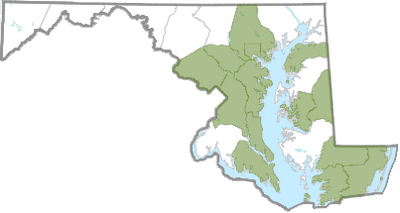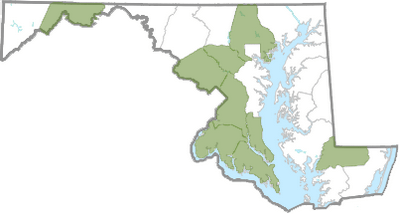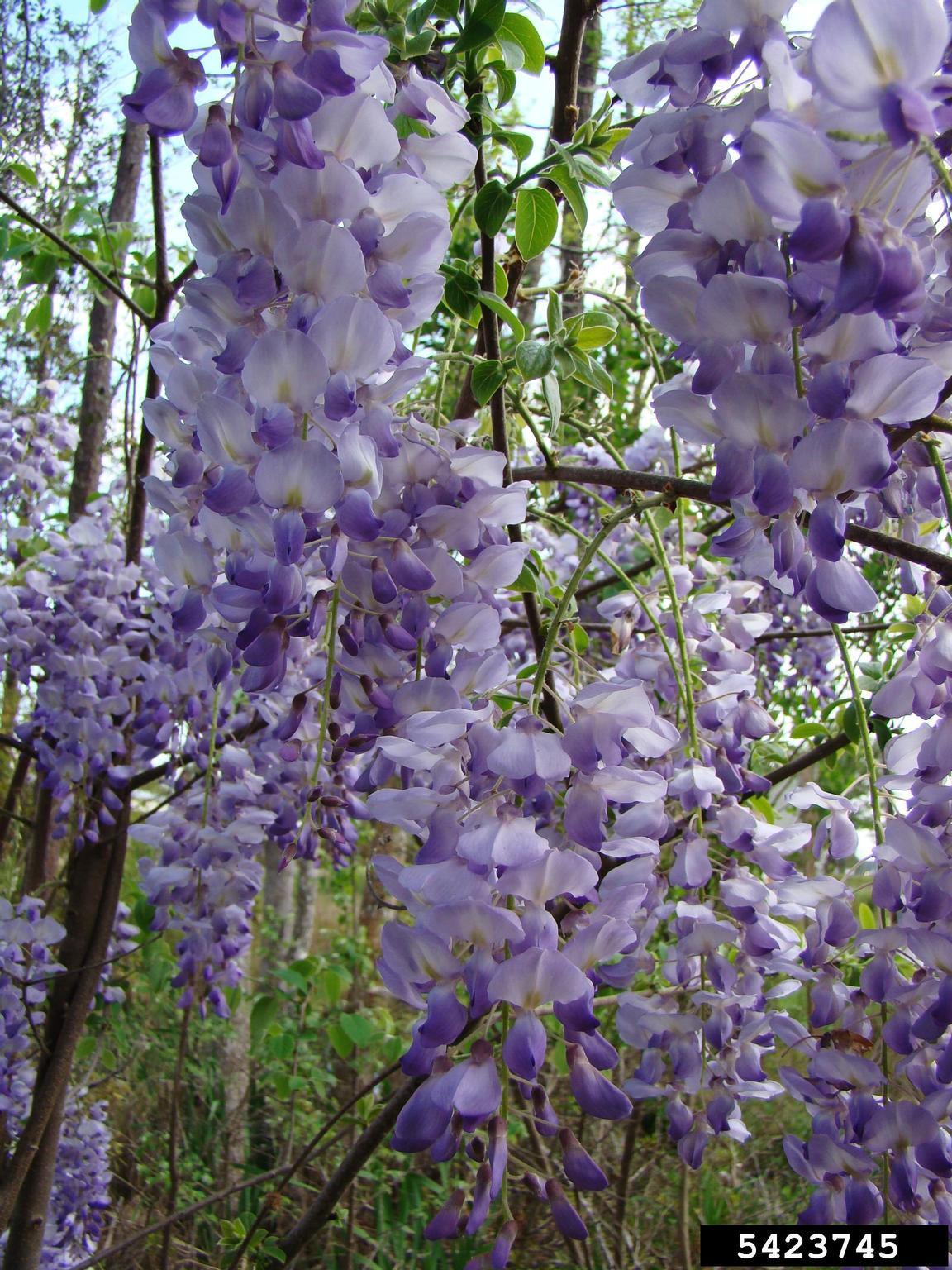From Spring 2023 issue of Branching Out. Subscribe to Branching Out here. Read more Invasives in Your Woodland articles here. This article contains information current as of date of publication.
Recently, observers in the area of Pemberton Historical Park in Salisbury MD noticed a plume of smoke rising into the air. This was the result of the ongoing battle against the invasive vines Chinese and Japanese Wisteria, that were in great abundance in the park. After staff removed them from the park’s trees, rangers from the Maryland Fire Service burned two slash piles of the vines—hence the smoke.
As their names suggest, Chinese and Japanese Wisterias are native to Asia. As with many other non-native plants, these were imported for landscaping and decorative purposes, as growers prized the pink and purple flowers they gave. (Apparently, the native wisteria’s similarly-colored flowers were less desirable.) They were imported in the early 1800s and soon escaped from landscaping into the surrounding environment. Today, both have spread along the east coast; Chinese Wisteria is more widespread, with populations as far south as Louisiana and as far west as Wisconsin. Japanese Wisteria infestations are concentrated in the mid-Atlantic and mid-south states. The Maryland Department of Agriculture designates both as “Tier 2” invasives; while retailers can still sell them, they must post a conspicuous sign indicating the plant can be invasive. Similarly, landscapers must provide a Tier 2 list to any customer considering them as plantings.

Courtesy Maryland Biodiversity Project.

Courtesy Maryland Biodiversity Project.
What are they?
Chinese Wisteria (Wisteria sinensis) and Japanese Wisteria (Wisteria floribunda) are both perennial woody vines. They prefer full sun but can tolerate shade, and are aggressive climbers. They can shade out native trees or strangle them with thick and heavy growth. Killing the native trees can open the canopy and expose the forest floor to full sun, encouraging the vines’ continued growth. They can also form dense thickets that suppress native species.
How do they spread?
These wisteria spread vegetatively as short stems form along the vines and will sprout roots if touching the ground. The vines can produce abundant seeds, which can be carried long distances in riparian settings.
How can I identify them?
These invasives are easily distinguished from the native wisteria by both the flowers and the seed pods. Chinese and Japanese Wisteria bloom in April and May; the native species blooms in the summer. Native seed pods are smooth and 2-4 inches long; the invasives’ seed pods are velvety, 4-6 inches long, and have constrictions that separate the seeds. Additionally, Chinese and American Wisteria vines twine around trees counter-clockwise; Japanese Wisterias twine clockwise. See the image gallery below.
How can I control them?
The key to treatment is early detection. Cutting the vines on trees will cause sprouting from the cut edge, so repeated cutting is necessary. Herbicide applications to the cut stump can be effective. Foliar spraying in denser infestations may be the best option.
For more information:
Learn more about Chinese and Japanese Wisteria:
Chinese and Japanese Wisteria (UME Home and Garden Information Center)
Fact Sheet: Exotic Wisterias (Plant Conservation Alliance- Alien Plant Working Group)
Plant Invaders of Mid-Atlantic Natural Areas: Exotic Wisterias (invasive.org)
